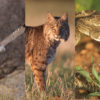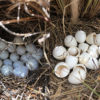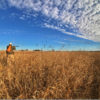
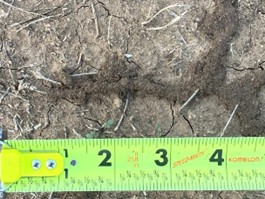 This year, May and early June saw beneficial rains over much of Texas (sorry Trans-Pecos and Permian Basin). Immediately after one of these rainy events you may have noticed swarms of small fragile flying insects appearing seemingly out of nowhere. If so, meet the desert termite (Gnathamitermes tubiformans). Also known as “woodlice,” desert termites are common and noticeable insects of south and west Texas rangelands. They construct fragile mud tubes and sheets of mud around the surfaces of herbaceous and woody plants, litter, dung, fence posts and similar objects.
This year, May and early June saw beneficial rains over much of Texas (sorry Trans-Pecos and Permian Basin). Immediately after one of these rainy events you may have noticed swarms of small fragile flying insects appearing seemingly out of nowhere. If so, meet the desert termite (Gnathamitermes tubiformans). Also known as “woodlice,” desert termites are common and noticeable insects of south and west Texas rangelands. They construct fragile mud tubes and sheets of mud around the surfaces of herbaceous and woody plants, litter, dung, fence posts and similar objects.
During prolonged drought conditions their feeding activities can reduce forage for livestock. Studies conducted on the Texas High Plains revealed an average termite population density of 8.6 million per acre, occasionally peaking at 39 million per acre, which can consume 366 pounds per acre of litter and forage during the growing season. Consequently, desert termites play a significant role in arid ecosystem dynamics. While “termites” generally have a bad reputation for damaging our homes, there are about 10 different species of termite’s native to the American Southwest. Desert termites do not damage man-made structures like their more destructive cousins—the subterranean termite. The impact of desert termites on rangelands is is indeed a double-edged sword.
Ecological Benefits of Desert Termites:
- Improved Soil Fertility and Structure: Desert termites are pivotal in enhancing soil fertility and structure. By breaking down organic matter, such as dead plant material and woody debris, they contribute to nutrient cycling, returning essential elements like nitrogen and phosphorus to the soil.
- Water Infiltration: Their tunneling behavior significantly improves soil porosity. The intricate network of galleries and tunnels created by these termites allows for better water infiltration and retention. This is particularly beneficial in arid environments where water is limited, as it aids in reducing soil erosion and improving the availability of water to plants.
- Vegetation Maintenance: Desert termites play a role in controlling plant populations. By feeding on grasses and other vegetation, they help maintain diverse plant communities, preventing any one species from becoming overly dominant.
- Carbon Sequestration: Termites are involved in the breakdown of lignocellulosic (“fibrous”) materials, which are major components of plant biomass. This process is crucial for carbon cycling and sequestration. By decomposing organic matter, termites help lock carbon in the soil, mitigating the effects of climate change.
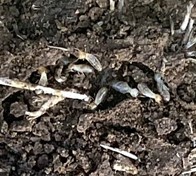 Ecological Concerns from Desert Termites:
Ecological Concerns from Desert Termites:
- Vegetation Damage: While their feeding habits can be beneficial, they can also cause significant damage to vegetation, particularly in overgrazed or disturbed areas. When termite populations become too large, they can denude an area of vegetation, leaving bare patches of soil. This can exacerbate soil erosion and reduce the landscape’s capacity to support plant and animal life.
- Disruption of Natural Succession: In some ecosystems, termites can interfere with plant succession processes. By preferentially feeding on certain plants, they may alter the species composition and successional pathways of plant communities. This can lead to changes in habitat availability for other organisms and potentially reduce biodiversity.
Desert termites in Texas embody a dual role in their ecosystems. Understanding their pros and cons is crucial for managing termite populations and minimizing their negative effects while leveraging their ecological benefits. Balancing these aspects is key to maintaining healthy rangelands ecosystems. – Dr. Dan Foley




